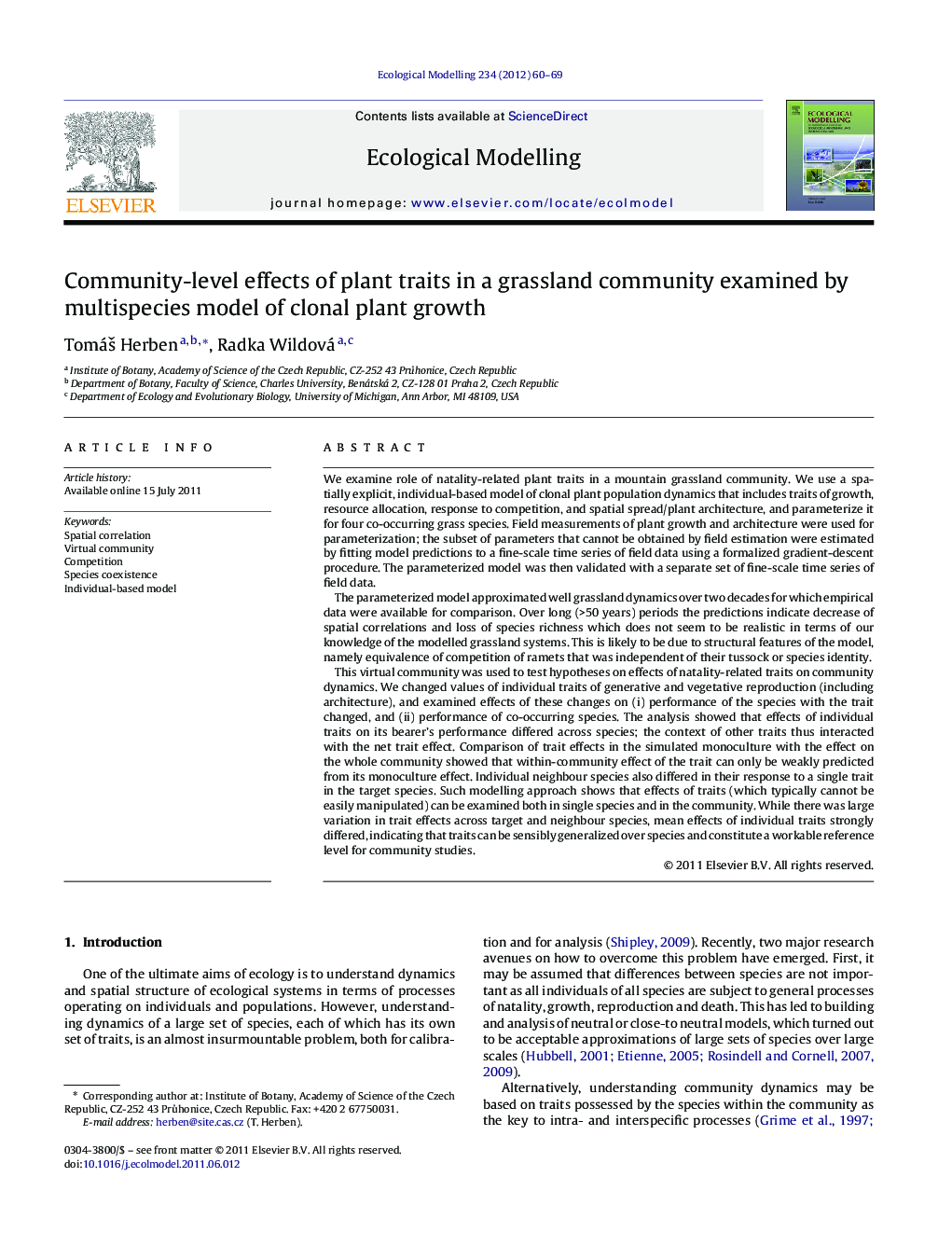| Article ID | Journal | Published Year | Pages | File Type |
|---|---|---|---|---|
| 4376495 | Ecological Modelling | 2012 | 10 Pages |
We examine role of natality-related plant traits in a mountain grassland community. We use a spatially explicit, individual-based model of clonal plant population dynamics that includes traits of growth, resource allocation, response to competition, and spatial spread/plant architecture, and parameterize it for four co-occurring grass species. Field measurements of plant growth and architecture were used for parameterization; the subset of parameters that cannot be obtained by field estimation were estimated by fitting model predictions to a fine-scale time series of field data using a formalized gradient-descent procedure. The parameterized model was then validated with a separate set of fine-scale time series of field data.The parameterized model approximated well grassland dynamics over two decades for which empirical data were available for comparison. Over long (>50 years) periods the predictions indicate decrease of spatial correlations and loss of species richness which does not seem to be realistic in terms of our knowledge of the modelled grassland systems. This is likely to be due to structural features of the model, namely equivalence of competition of ramets that was independent of their tussock or species identity.This virtual community was used to test hypotheses on effects of natality-related traits on community dynamics. We changed values of individual traits of generative and vegetative reproduction (including architecture), and examined effects of these changes on (i) performance of the species with the trait changed, and (ii) performance of co-occurring species. The analysis showed that effects of individual traits on its bearer's performance differed across species; the context of other traits thus interacted with the net trait effect. Comparison of trait effects in the simulated monoculture with the effect on the whole community showed that within-community effect of the trait can only be weakly predicted from its monoculture effect. Individual neighbour species also differed in their response to a single trait in the target species. Such modelling approach shows that effects of traits (which typically cannot be easily manipulated) can be examined both in single species and in the community. While there was large variation in trait effects across target and neighbour species, mean effects of individual traits strongly differed, indicating that traits can be sensibly generalized over species and constitute a workable reference level for community studies.
• Grassland dynamics can be well reproduced by an individual based multispecies model. • This virtual community was used to test hypotheses on effects of plant traits. • Effects of natality-related traits can be generalized over species.
